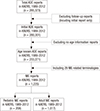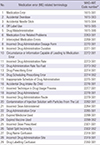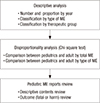1. Kopelman LM, Moskop JC. East Carolina University School of Medicine. Children and health care moral and social issues. Dordrecht; Boston: Kluwer Academic Publishers;1989.
2. Mathis LL, Iyasu S. Safety monitoring of drugs granted exclusivity under the Best Pharmaceuticals for Children Act: what the FDA has learned. Clin Pharmacol Ther. 2007; 82:133–134.
3. Kauffman RE. Clinical trials in children: problems and pitfalls. Paediatr Drugs. 2000; 2:411–418.
4. Neubert A. Pharmacovigilance in pediatrics: current challenges. Paediatr Drugs. 2012; 14:1–5.
5. Kohn LT, Corrigan JM, Donaldson MS. To err is human building a safer health system. Washington, D.C.: National Academy Press;2000.
8. Marino BL, Reinhardt K, Eichelberger WJ, Steingard R. Prevalence of errors in a pediatric hospital medication system: implications for error proofing. Outcomes Manag Nurs Pract. 2000; 4:129–135.
9. Hicks RW, Becker SC, Cousins DD. Harmful medication errors in children: a 5-year analysis of data from the USP's MEDMARX program. J Pediatr Nurs. 2006; 21:290–298.
10. Goldmann D, Kaushal R. Time to tackle the tough issues in patient safety. Pediatrics. 2002; 110:823–826.
11. Kaushal R, Bates DW, Landrigan C, McKenna KJ, Clapp MD, Federico F, Goldmann DA. Medication errors and adverse drug events in pediatric inpatients. JAMA. 2001; 285:2114–2120.
13. Cowley E, Williams R, Cousins D. Medication errors in children: a descriptive summary of medication error reports submitted to the United States pharmacopeia. Curr Ther Res. 2001; 62:627–640.
14. Wong IC, Ghaleb MA, Franklin BD, Barber N. Incidence and nature of dosing errors in paediatric medications: a systematic review. Drug Saf. 2004; 27:661–670.
15. Folli HL, Poole RL, Benitz WE, Russo JC. Medication error prevention by clinical pharmacists in two children's hospitals. Pediatrics. 1987; 79:718–722.
16. Wilson DG, McArtney RG, Newcombe RG, McArtney RJ, Gracie J, Kirk CR, Stuart AG. Medication errors in paediatric practice: insights from a continuous quality improvement approach. Eur J Pediatr. 1998; 157:769–774.
17. Wong I, Sweis D, Cope J, Florence A. Paediatric medicines research in the UK: how to move forward? Drug Saf. 2003; 26:529–537.
18. Hibbard JH, Peters E, Slovic P, Tusler M. Can patients be part of the solution? Views on their role in preventing medical errors. Med Care Res Rev. 2005; 62:601–616.











 PDF
PDF ePub
ePub Citation
Citation Print
Print





 XML Download
XML Download